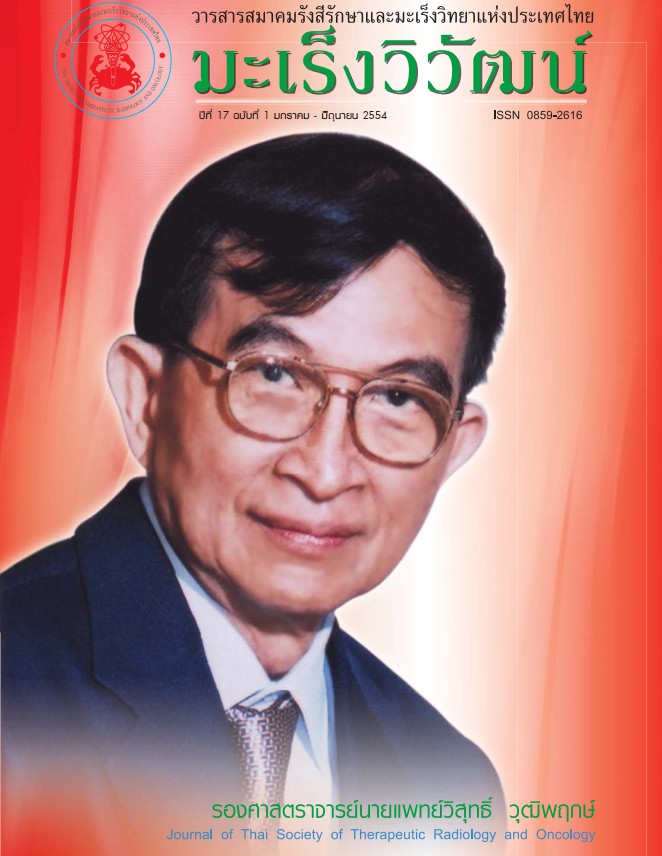A Comparison between the Las Vegas and the PTW EPID QC PHANTOM® for portal imaging quality assurance
Abstract
Electronic portal imaging device (EPID) is widely used for patient position verifi cation. The regular quality assurance (QA) of EPID image quality is necessary to ensure treatment effi cacy. The purpose of the study was to compare the Las Vegas phantom and PTW EPID QA PHANTOM® in an amorphous silicon EPID image quality investigation. The Elekta iViewGT system was investigated with the PTW EPID QA PHANTOM® and compared with the Las Vegas phantom. We exposed both phantoms by for x-low (6 MV x-ray) and x-high (10 MV X-ray), at dose rate of 200 and 400 MU/min (the normal dose rate which used in routine) and the monitor units from 1, 2, 4, 6, 8, 10, 50 and 100. The results showed that the Las Vegas phantom could be shown only the number of holes that could be seen. The visible holes in raw and column in the Las Vegas image determines the contrast and resolution of EPID. For x-low beams showed more holes than x-high. More MU used, more holes could be seen. The dose rate of the x-low and x-high do not affected the number of holes. For the PTW EPID QC PHANTOM® showed the mean values of signal-to-noise-ratio and contrast resolutions. X-high showed the higher values of the SNRs than x-low. The 25% MTF high contrast (horizontal) lp/mm for the x-low is in the range of 0.61 - 0.62, xhigh is 0.56 - 0.58 lp/min. The 25% MTF high contrast (vertical) lp/mm for x-high is 0.50 and 0.46 for x-low.
References
Herman MG, Balter JM, Jaffray DA, et al. Clinical use of electronic portal imaging: Report of AAPM Radiation Therapy Committee Task Group 58: Med. Phys. 2001; 28, 712-736
Pesznyák C, Polgár I, Weisz C, et al. Verifi cation of quality parameters for portal images in radiotherapy: Radiol. Oncol. 2011: 45,68-74
Downloads
Published
How to Cite
Issue
Section
License
บทความที่ได้รับการตีพิมพ์เป็นลิขสิทธิ์ของวารสารมะเร็งวิวัฒน์ ข้อความที่ปรากฏในบทความแต่ละเรื่องในวารสารวิชาการเล่มนี้เป็นความคิดเห็นส่วนตัวของผู้เขียนแต่ละท่านไม่เกี่ยวข้องกับ และบุคคลากรท่านอื่น ๆ ใน สมาคมฯ แต่อย่างใด ความรับผิดชอบองค์ประกอบทั้งหมดของบทความแต่ละเรื่องเป็นของผู้เขียนแต่ละท่าน หากมีความผิดพลาดใดๆ ผู้เขียนแต่ละท่านจะรับผิดชอบบทความของตนเองแต่ผู้เดียว




